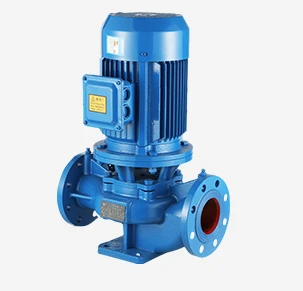Kurdish
- Afrikaans
- Albanian
- Amharic
- Arabic
- Armenian
- Azerbaijani
- Basque
- Belarusian
- Bengali
- Bosnian
- Bulgarian
- Catalan
- Cebuano
- Corsican
- Croatian
- Czech
- Danish
- Dutch
- English
- Esperanto
- Estonian
- Finnish
- French
- Frisian
- Galician
- Georgian
- German
- Greek
- Gujarati
- Haitian Creole
- hausa
- hawaiian
- Hebrew
- Hindi
- Miao
- Hungarian
- Icelandic
- igbo
- Indonesian
- irish
- Italian
- Japanese
- Javanese
- Kannada
- kazakh
- Khmer
- Rwandese
- Korean
- Kurdish
- Kyrgyz
- Lao
- Latin
- Latvian
- Lithuanian
- Luxembourgish
- Macedonian
- Malgashi
- Malay
- Malayalam
- Maltese
- Maori
- Marathi
- Mongolian
- Myanmar
- Nepali
- Norwegian
- Norwegian
- Occitan
- Pashto
- Persian
- Polish
- Portuguese
- Punjabi
- Romanian
- Russian
- Samoan
- Scottish Gaelic
- Serbian
- Sesotho
- Shona
- Sindhi
- Sinhala
- Slovak
- Slovenian
- Somali
- Spanish
- Sundanese
- Swahili
- Swedish
- Tagalog
- Tajik
- Tamil
- Tatar
- Telugu
- Thai
- Turkish
- Turkmen
- Ukrainian
- Urdu
- Uighur
- Uzbek
- Vietnamese
- Welsh
- Bantu
- Yiddish
- Yoruba
- Zulu
Telephone: +86 13120555503
Email: frank@cypump.com
کانونی یەکەم . 24, 2024 01:26 Back to list
Understanding the Function and Efficiency of Ejection Pumps in Various Applications
Understanding Ejection Pumps Function, Applications, and Benefits
Ejection pumps play a crucial role in various industrial and residential applications, specifically designed to move liquids and sludges from lower to higher elevations. These pumps are essential when gravity drainage is not viable, and they serve a variety of sectors, including wastewater treatment, construction, and even in some specialized industrial processes. This article aims to delve into the function, applications, benefits, and maintenance of ejection pumps.
What is an Ejection Pump?
Ejection pumps, also known as ejector pumps, are devices that utilize a motor-driven pump and a venturi system to create a vacuum that draws in fluids from a low-pressure area. The design generally consists of a primary impeller, which provides the requisite kinetic energy, and a secondary stage that compresses the liquid, utilizing the pressure difference to lift the liquid upwards. Unlike standard pumps, ejection pumps can handle solids and sludges, making them highly versatile.
How Do Ejection Pumps Work?
The basic principle behind ejection pumps revolves around fluid dynamics. The pump operates by using high-speed flow from a nozzle, which creates a vacuum in the venturi chamber. When liquid enters this chamber, the decrease in pressure allows the liquid to be drawn in. Once the liquid is mixed with the pressurized flow from the impeller, it is expelled through the discharge pipe. This process is particularly effective in areas where conventional methods of lifting liquids would be inefficient or impractical.
Applications of Ejection Pumps
Ejection pumps have a wide range of applications across different industries. Here are some key sectors where they are commonly used
1. Wastewater Management Ejection pumps are frequently employed in sewage systems to lift wastewater from lower levels, ensuring that it flows into treatment facilities for processing.
2. Construction Sites When excavating foundations or tunnels, groundwater can accumulate. Ejection pumps are used to remove this water efficiently, keeping work areas dry and safe.
4. Residential Uses Ejection pumps are often installed in basements to prevent flooding when gravity drainage is not feasible. They are vital in homes with lower-level bathrooms or sinks that need to move waste to a higher sewage line.
5. Agricultural Applications These pumps are also advantageous in agricultural settings for draining fields or managing effluent from livestock operations.
ejection pump

Benefits of Ejection Pumps
Ejection pumps offer several advantages that make them an appealing choice for many applications
- Versatility Their ability to handle both liquids and solids makes them suitable for numerous tasks in various environments.
- Space-Efficiency Ejection pumps often require less space compared to traditional pumps, making them ideal for compact installations.
- Reduced Maintenance Due to their design, ejection pumps typically experience less wear and tear, which can lead to lower maintenance costs over time.
- Adaptability These pumps can be integrated into existing systems, providing an effective solution for problematic drainage issues.
Maintenance of Ejection Pumps
To ensure the longevity and efficiency of ejection pumps, regular maintenance is essential. This can include
- Regular Inspection Checking for leaks, blockages, and wear on pump components can prevent major failures.
- Cleaning Routine cleaning is important, especially in environments where solids are processed, to avoid build-up that can impede function.
- Monitoring Performance Keeping an eye on the pump's performance can help identify any irregularities early, allowing for timely repairs.
In conclusion, ejection pumps are invaluable tools in managing fluids across multiple sectors. Their unique capability to handle solids, efficiency in various applications, and low maintenance make them a popular choice for addressing complex pumping challenges. Understanding their operation, applications, and maintenance needs can save time and resources, ensuring that they function optimally for years to come. Whether in a household setting or industrial application, the role of ejection pumps cannot be overstated—providing essential support in managing fluid movement in a world that constantly relies on effective water and waste management solutions.
-
Heavy-Duty Mining Sludge Pumps - Wear-Resistant Slurry Handling
NewsAug.02,2025
-
Horizontal Split Case Pump with GPT-4 Turbo | High Efficiency
NewsAug.01,2025
-
ISG Series Pipeline Pump - Chi Yuan Pumps | High Efficiency, Durable Design
NewsAug.01,2025
-
Advanced Flue Gas Desulfurization Pump with GPT-4 Turbo | Durable & Efficient
NewsJul.31,2025
-
ISG Series Vertical Pipeline Pump - Chi Yuan Pumps | Advanced Hydraulic Design&Durable Construction
NewsJul.31,2025
-
ISG Series Vertical Pipeline Pump - Chi Yuan Pumps | Energy Efficient & Low Noise
NewsJul.31,2025










